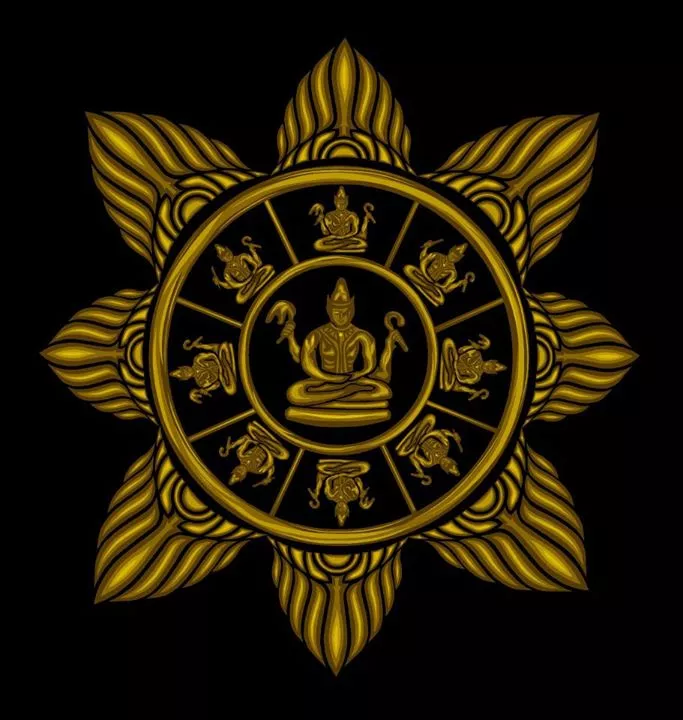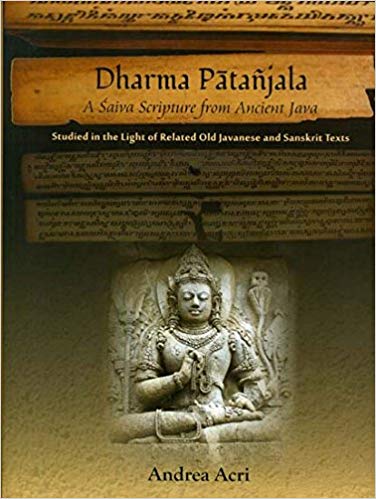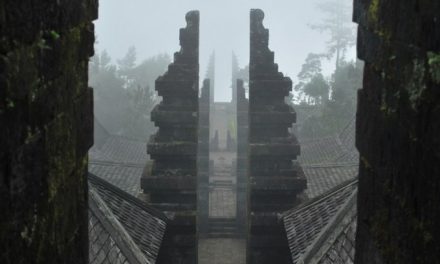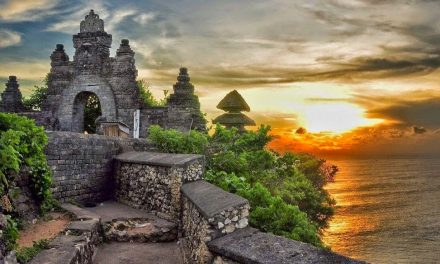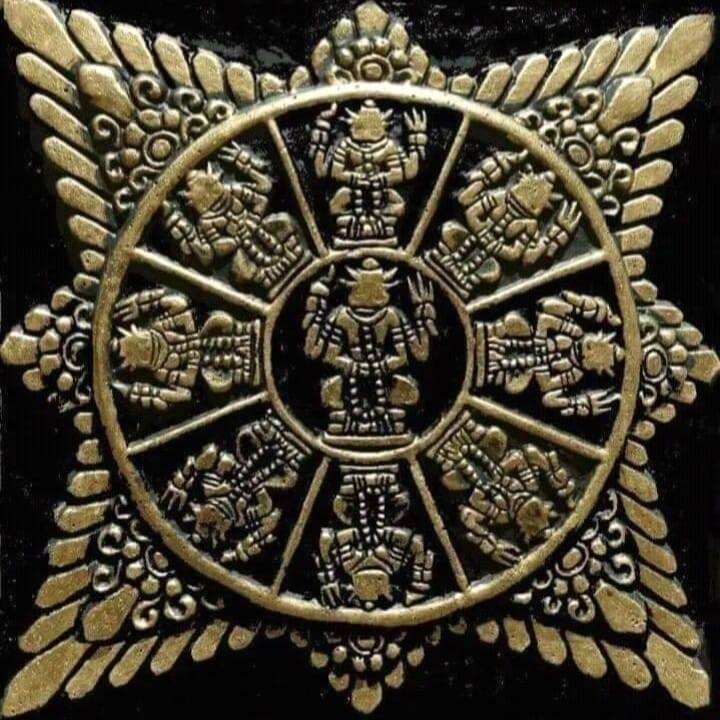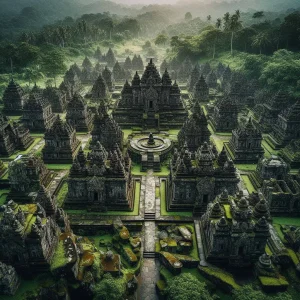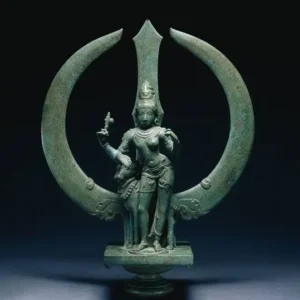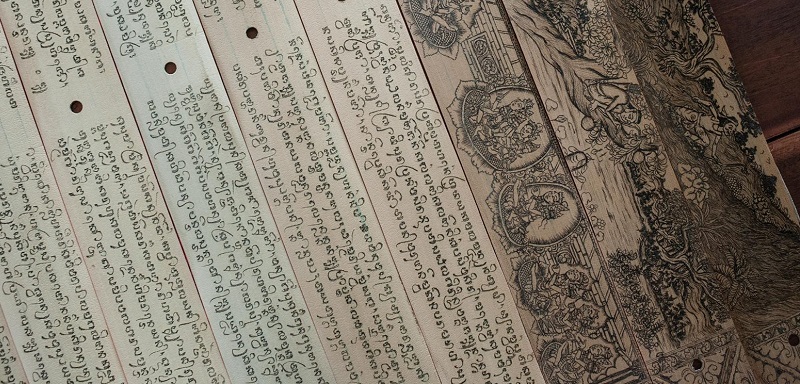
Palm-leaf manuscripts in South and Southeast Asia, are engraved, dried palm leaves where spiritual and cultural instructions are traditionally written and which are used to preserve all the spiritual and practical lore.
The two main species used were the Talipot (Corypha umbraculifera) and the Palmyra leaf (Borassus flabellifer), the latter being the one most used in Orissa and in Indonesia.
In Indonesia the palm-leaf manuscripts are called lontar (a modern form of the Old Javanese rontal, from ron “leaf” and tal “Palmyra palm”.
Because the material degrades over time, they have to be copied again every few decades or centuries.
Each sheet has a hole through which to pass a string and are tied together like a book. The individual sheets of palm leaves are called patra or parna in Sanskrit.
The palm leaves are cooked and dried, then the writer then uses a knife pen to inscribe letters. Natural coloring is applied to the surface so that the ink sticks.
The lontar cover various aspects of life, including philosophy, poetry, grammar, rules for religious ceremonies, medicine (usadha), astrology, historical events, genealogy, law codes, religious calendars, guidelines for arts and architecture.
The Balinese Palm Leaf Manuscripts
With the spread of printing presses in the 19th century, the copying from palm leaves came to an end in most countries, except in Bali where numerous specialists still copy them according to tradition.
The Balinese Brahmins see it as a sacred duty to rewrite them, as they contain the secret esoteric teachings of Balinese religion.
Over 50,000 ancient lontar are held by the priests, scholars and ordinary residents of Bali, passed down from generation to generation.
They are usually kept in hand-crafted wood boxes and worshiped yearly on the day of Saraswati Puja (called Vasant Panchami in India).
The language of most palm leaf manuscripts is Kawi (Old Javanese) and Sanskrit.
When the Javanese civilization collapsed due to the Moslems encroachment into Indonesia, most lontar were collected by the priestly families and intellectuals, and brought from Java and Sumatra to Bali, which explain the very high concentration of scriptures on the island.
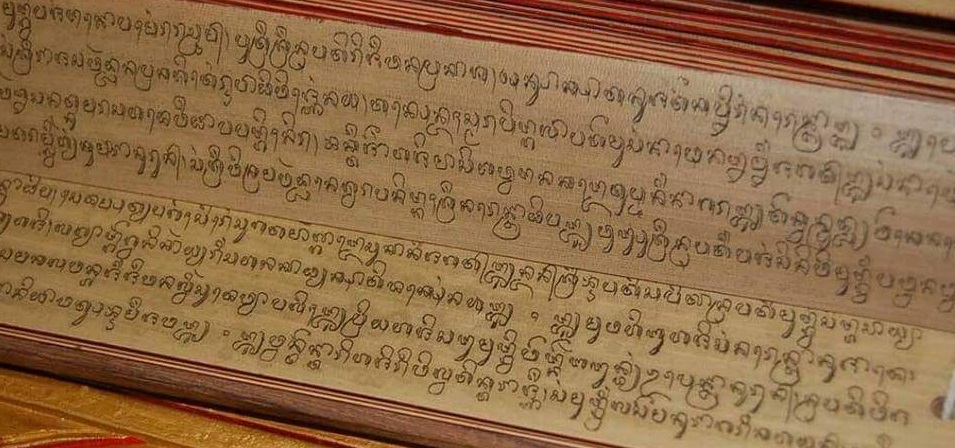
A treasure trove of knowledge
Another recent example is a copy of the classical Javanese text, Dharma Pātañjala that was found on a single lontar in West Java.
This very important text of Javanese Shaivism text was until then unknown in Bali. It was then retranscribed it into Balinese script on a lontar in 2007.
From lontar manuscripts, Dr. Ron Jenkins and Dr. Catra of Denpasar also recently transcribed and translated the Sivaratrikalpa (‘Shiva’s Night Meditation’) of Mpu Tanakun, an important text about Javanese Shaiva spiritual practices.
Many lontar still have to be rediscovered and translated, which will be of great interest for spiritualists and researchers all over the world in the coming years.
9 categories of palm-leaf manuscripts
1) Weda lontar – Holy books dealing with mantras and religious rituals, written in Sanskrit, Old Javanese and Balinese.
- Mantra – incantations originating from Java and Bali
- Kalpasastra – lontar dealing with religious rituals
- Palakerta – lontar dealing with rules and regulations. These can also be found in the books of Dharmasastra, Kerta Sima, and Awig-awig (written and unwritten customary village laws)
2) Agama lontar – Religious rules, ethics, morals and law
- Sasana – guidelines for ethics and morals
- Niti – dealing with juridical systems
3) Wariga lontar – Astronomy and astrology
- Tutur and Upasdesa – dealing with spiritual science of the universe
- Kanda – dealing with language, mythology, architecture, and other special subjects
4) Usada lontar – Medicine, homeopathy and healing.
5) Itahasa lontar – Ramayana, Mahabharata and Balinese literature
- Itahasa – epics
- Parwa – epics in prose form
- Kakawin – epics based on old Indian rhythms
- Kindung – literature in Balinese, composed with a macepat rhythm, e.g. Sinom and Pangkur
- Pamancangah – dealing with genealogy
6) Babad lontar – History and genealogy
- Stories with a historical aspect, such as Panji Wijaya Krama and Rangga-Lawe, covering the period of the Majapahit Kingdom up to the rebellion of Rangga-Lawe
- Stories of the falling of the Kingdoms in song form, such as Rusak Buleleng
7) Tantri lontar – Stories from ancient Indian literature, Balinese stories and scholastic writings:
- Tantra Kamandala – stories from ancient Indian literature, written in Sanskrit
- Satua Pengatihan Bali – stories containing Tantric influences or indigenous Balinese.
- Surat Pengeling-eling – notes written by royalty and scholars.
- Stories from the performing arts, such as Gambuh, Arja, etc.
8) Lelampahan lontar
- Stories from the performing arts – Kekawin, Ramayana, Bharata Yuddha, Bomakawya, Arjunawiwawa, a.o.
- Stories derived from Kidung that take the Wayang Panji form
- Stories from Parwa that take the Wayang Parba form.
9) Prasi lontar – Illustrated lontar derived from the wayang shadow puppet plays.
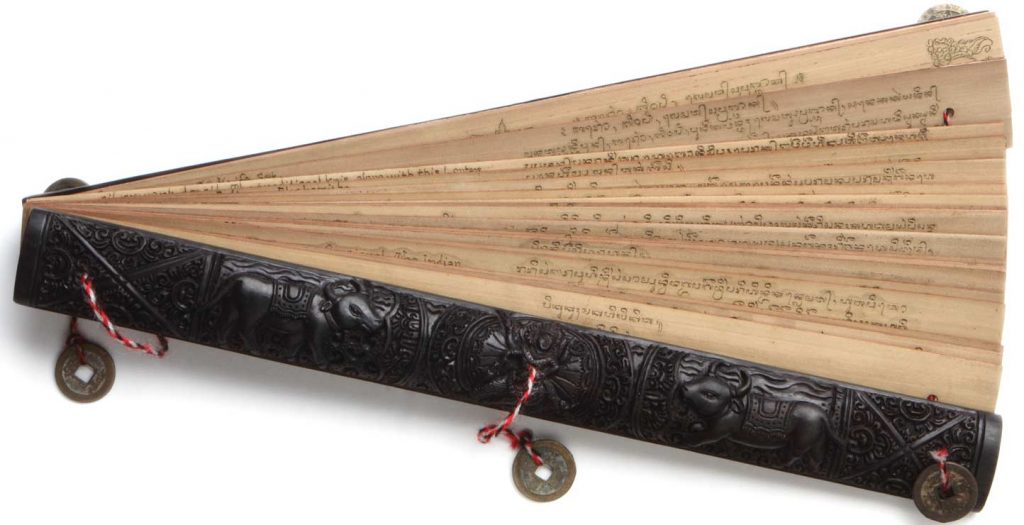
Indonesian literature
Apart from spiritual and esoteric knowledge, lontar also contain the works of the great Indonesian poets and authors like:
Several manuscripts are recognized by UNESCO as Memory of the World such as the Nagarakretagama composed by Mpu Prapanca, containing the depiction of the Majapahit empire during its golden time and La Galigo, a myth of creation based on oral tradition and was written in Buginese.
La Galigo is the longest piece of classical literature in the world (300.000 verses on 12.000 leaves). This mythological story in two parts tells of the creation of the world and of the Bugis people.
- Mpu Kanwa who composed the Arjunawiwāha in 11th century
- Mpu Sedah and Mpu Panuluh who wrote the Bharatayudha in the 12th century
- The Kakawin Sutasoma written by Mpu Tantular
- The Smaradahana
- The Sundanese language works such as the Carita Parahyangan or the Bujangga Manik.
- Pustaha Laklak – A repository of knowledge of the Batak community in North Sumatra. It contains magical formulas, mantras and medicinal formulas.
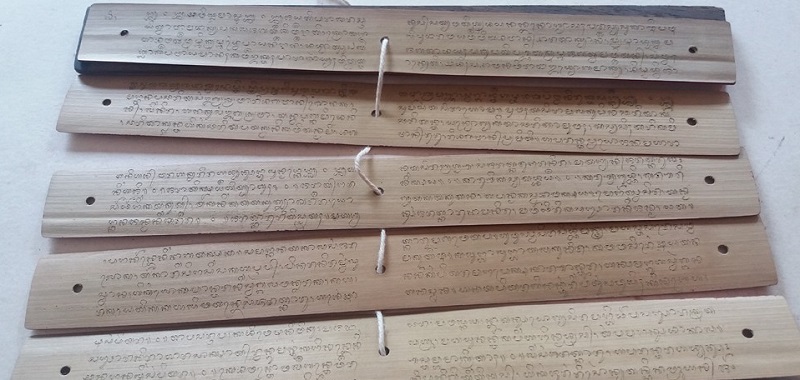
Where to find the lontar collections
- The Gedung Kirtya lontar library collects has thousands of lontar in Balinese, Kawi, Dutch, English and German.
- Another collection of Lontar manuscripts are stored at the Puri Anyar Heritage Ubud (managed by the royal family of Ubud)
- Indonesia has more than 33,000 pieces dispersed in local museums and other places, written in local alphabets (Javanese, Balinese, Old Sundanese, Buginese/Lontara, Rejang, Lampung, Karo, Pakpak, Simalungun, Toba, Mandailing and Kerinci/Rencong).
- The Indonesian National Library on 28A Salemba Raya Street in Jakarta stores more than 10,000 pieces.
- MANASSA (Indonesian Association of Nusantara Manuscripts) preserves and studies Indonesian manuscripts. They have 17 branches throughout the country.
- The National Archives of Indonesia on 7, Ampera Raya Street in Jakarta stores and rehabilitates old manuscripts.
- The South-East Asian collection of the State Library of Bavaria has around 4,000 manuscripts in Batak, Burmese, Javanese, Balinese, Cambodian, Lampung, Laotian, Malayan, Thai, Vietnamese and Philippines languages. The Javanese-Balinese are the most numerous (2,650), followed by Burmese (900) and Thai (500).
- In England around 1,200 pieces are stored in the British Library.
- The Netherlands has 17,000 of them.
- Other countries keep the manuscripts like the United States, France, Germany, Spain, Norway, Ireland, Portugal, Thailand, Malaysia and Singapore.
Lontar digitization projects
Many lontar have been scanned, and slowly are being transcribed into Unicode text, transliterated from their original language into Latin script and then eventually translated into English.
- Substantial collections of lontar are held in the libraries of Udayana University, in the Bali Museum, and in the Balai Bahasa (Centre for Language).
- The Dwijendra Foundation in the Pusat Dokumentasi Budaya Bali (Centre for Documentation of Balinese Culture) has 3,000 lontar and funds the ongoing digitization project headed by Dr. Nyoman Catra, It has been uploaded as the ‘Balinese Digital Library’. The lontar are now being manually transcribed into Unicode text in Balinese script with the help of PanLex, so that it will be readable and searchable by computer.
- The Hanacaraka Society is another project of digitalization of lontar in Java and Bali.
- AMADI Project
- Javanese Manuscript collection of the Situs Kabuyutan Ciburuy
